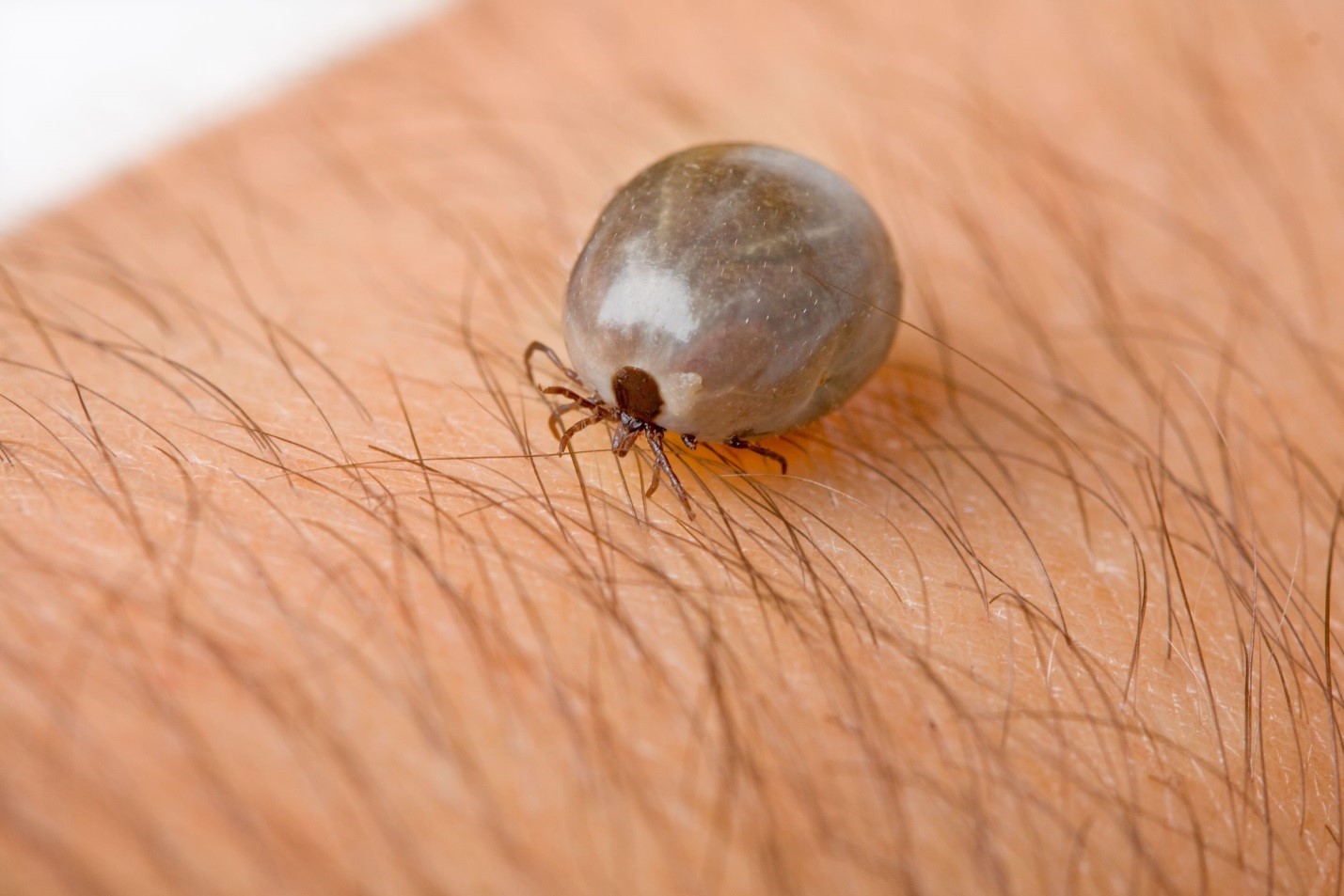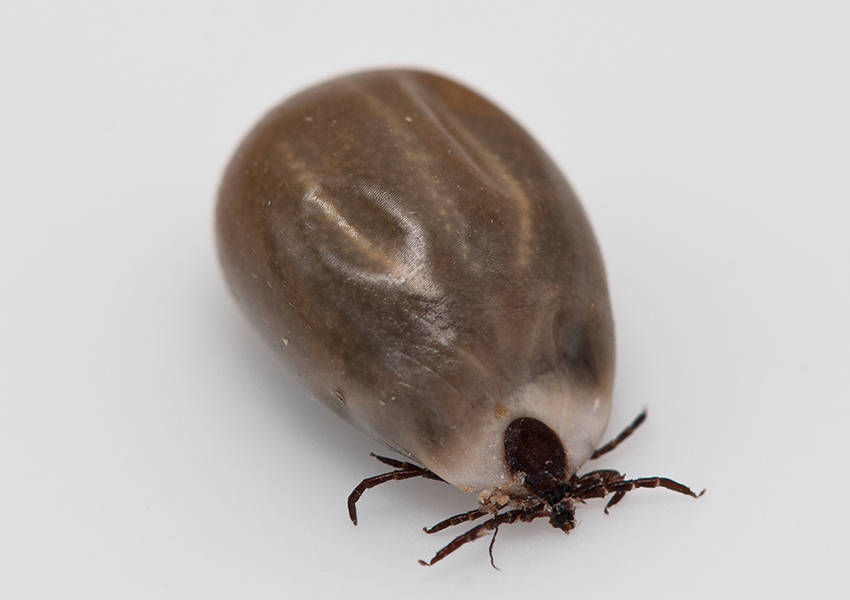
If dogs develop tick paralysis from a tick feeding on them, symptoms usually develop after the tick has been feeding for at least 5 days. Symptoms of tick diseases may not develop for days or weeks after the tick bite, depending upon the type of disease that is transmitted. Lyme disease can also cause a shifting leg lameness. Some tick-borne diseases can cause enlarged lymph nodes, lethargy, and fever. Petechiae can be better seen in areas that have little to no fur, such as the belly, ear flaps, gums, and armpits.

BROWN DOG TICK SKIN
It is important to monitor your dog’s skin for these lesions if you find a tick on your dog. A dog with either of these diseases may start to have nosebleeds or develop small reddish to purplish lesions on the skin or gums, called petechiae. If a tick transmits Ehrlichia or anaplasma, these tick-borne diseases can cause bleeding disorders. However, if a tick is in the ear or between the toes, the dog may respond by shaking the head or licking or chewing at the foot. Dogs usually do not feel a tick biting or feeding on them, and therefore show no symptoms. They release a substance within their saliva that makes their bite painless. Diseases transmitted: Lyme disease, Anaplasma.Location: States along the Pacific coast, Arizona, Nevada, and Utah.Western black-legged or deer tick ( Ixodes pacificus) Diseases transmitted: Rocky Mountain spotted fever, Tularemia.Rocky Mountain wood tick ( Dermacentor andersoni) Diseases transmitted: Ehrlichia, Rocky Mountain spotted fever, Tularemia.Location: California and east of the Rocky Mountains.Diseases transmitted: Tick paralysis, American canine Hepatozoonosis, RickettsiosisĪmerican dog tick ( Dermacentor variabilis).Location: Coastal states along the Gulf of Mexico and Atlantic Coast and as far north as Maryland.Photo Credit: National Environmental Health Association

More research is being done to further determine what diseases, if any, these ticks can transmit to dogs. In a laboratory setting, this tick was able to transmit Rocky Mountain spotted fever.

After feeding for a certain length of time, an infected tick releases bacteria through its saliva into a dog, causing the dog to acquire a tick-borne disease.ĭiseases transmitted by a tick bite include: Not all ticks carry diseases, but some ticks carry more than one.

Ticks can carry a variety of serious diseases by harboring certain types of bacteria in their bodies. Global warming and other environmental factors have aided in a higher density of ticks, migration of ticks to new regions, and an increased rate of tick-borne diseases. Ticks prefer to live in warm and humid environments, and certain species may only be found in specific regions of the United States. Some ticks feed by biting dogs to obtain a blood meal. Ticks are eight-legged bloodsucking external parasites that can be found worldwide. This article will cover the most common species of ticks that affect dogs and the types of diseases they can carry. If you find a tick on your dog, it is important to identify it to learn the most common diseases that this species may transmit and what symptoms your dog may display if a disease is transmitted. There are several species of ticks that feed on dogs and new species still being discovered.


 0 kommentar(er)
0 kommentar(er)
